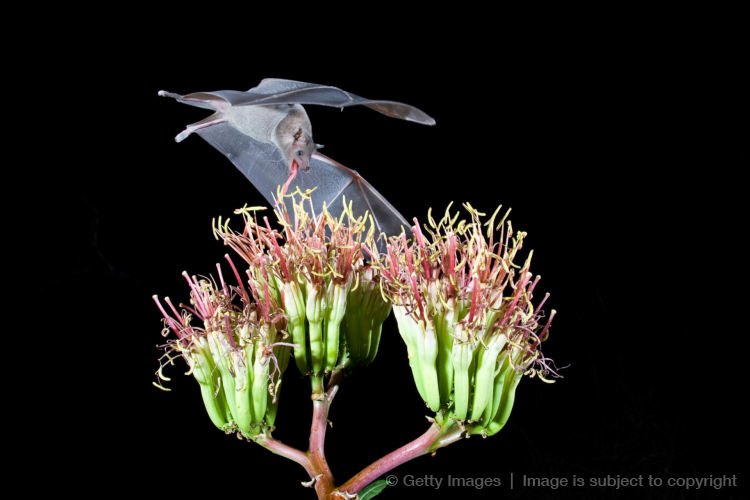The Lesser Long-Nosed Bat
The lesser long-nosed bat is a migratory species that spends the summer in the Malpai area. These bats spend most of the year to the south in Mexico, where they can find enough nectar and fruit from tropical trees to feed them through the winter. They come to our area in June as the agave plants (century plants) begin to bloom, and their natural food until late summer consists almost completely of agave nectar. When we got involved with fire planning in the Peloncillo Mountains, these bats became an issue because there was some concern that fire might kill enough agaves to cause food shortage for the bats. At that time, we organized a meeting of bat and agave biologists to identify what was known, and what information was needed, to assure that our fire plans would not harm the bats. The outcome was a consensus among the specialists based on their shared expert opinion, in the absence of existing data, that fire-caused agave mortality of 20% or less was not likely to harm the bats. We were able to move ahead with the fire program through an agreement to monitor agave mortality and use the 20% threshold to guide future burns. Studies that resulted from this agreement have shown that agave mortality is generally well under 20%, and moreover, fire tends to stimulate agave germination and so increase agave reproduction.

